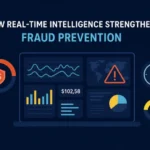2025 Digital Marketing Strategy: A Playbook for Sustainable Growth

Introduction
The coming year will be defined by heightened privacy regulations, AI‑driven personalization, and audiences that demand authentic, values‑centric engagement. Brands cannot afford to rely on last decade’s tactics. Instead, they must adopt a forward‑looking 2025 Digital Marketing Strategy that balances emerging technology with human‑first storytelling. The following blueprint lays out the pillars, processes, and performance metrics required to thrive in an increasingly complex digital arena.
1. Understanding the 2025 Consumer
1.1 Fragmented Attention
Audiences now split their time across short‑form videos, interactive podcasts, augmented‑reality (AR) product demos, and community‑driven chat apps. Winning brands create channel‑agnostic narratives that feel native everywhere—whether viewed on a smart fridge screen or heard through in‑car voice assistants.
1.2 Privacy‑First Expectations
With third‑party cookies nearly extinct and legislation like the EU’s Digital Services Act expanding globally, consumers expect transparency and consent‑based data usage. First‑party data, collected via value‑exchange touchpoints such as loyalty programs or gated content, becomes the new oil powering personalization engines.
1.3 Values‑Driven Purchasing
Sustainability, social justice, and local impact weigh heavily in buying decisions. Marketing messages that align with authentic corporate actions—carbon‑neutral shipping, inclusive hiring, charitable partnerships—resonate more than discounts alone.
2. Core Pillars of a Future‑Ready Strategy
2.1 Owned Media Renaissance
Rising ad costs push brands to reclaim control over audience relationships. Newsletters, branded podcasts, and community hubs (e.g., Discord, Slack) foster direct engagement while feeding first‑party data pipelines.
2.2 AI‑Augmented Creativity
Generative models accelerate concept development, draft copy in multiple tones, and produce video snippets adapted to each platform’s best practices. Human editors remain essential for brand voice, compliance, and emotional resonance, but machine speed unlocks large‑scale multivariate testing that manual teams could never attempt.
2.3 Omnichannel Personalization
Edge computing allows real‑time content adaptation even when connectivity lags. For example, a travel brand can instantly switch homepage offers from ski trips to beach getaways based on local weather data—delighting users with hyper‑relevant experiences that boost conversion rates.
2.4 Ethical Data Governance
Zero‑party data (explicitly shared preferences) complements behavioral insights to create consent‑driven profiles. Transparent dashboards let subscribers see, edit, or delete their data, turning privacy into a competitive advantage rather than a regulatory burden.
3. Tactical Roadmap
| Quarter | Key Initiatives | Success Metrics |
| Q1 | Conduct data audit; purge redundant sources and unify CRM, analytics, and ad platforms through clean‑room integrations. | 100 % data source mapping; <2 % duplicate records |
| Q2 | Launch AI‑powered content engine for blog, email, and social captions. Pilot five automated A/B tests per month. | 20 % production time saved; 15 % CTR uplift |
| Q3 | Roll out loyalty app with progressive profiling to capture zero‑party data. Integrate dynamic offers based on location and past purchases. | 25 % app adoption rate; 10 % increase in repeat purchase frequency |
| Q4 | Implement carbon‑aware ad buying; shift 40 % of media spend to low‑emission channels and measure brand perception lift. | 30 % reduction in campaign carbon footprint; 8‑point brand favorability increase |
4. Channel‑Specific Best Practices
4.1 Search
- Voice & Visual Optimization – Structure FAQs for conversational queries and embed rich metadata in images to appear in camera‑based searches.
- Topical Depth – Cluster content around pillar pages that answer every nuance of a subject, earning topical authority and longer session durations.
4.2 Social Media
- Short‑Form Video Mastery – Films under 15 seconds dominate discover feeds; integrate narrative hooks within the first two seconds.
- Creator Co‑Creation – Move beyond sponsorship into genuine product collaborations where influencers share revenue, ensuring authentic advocacy.
4.3 Email & Messaging
- Predictive Send Times – Machine learning analyzes open patterns to deliver at the exact moment each subscriber is most receptive.
- Interactive Elements – AMP emails enable cart additions, survey responses, or booking confirmations without leaving the inbox, shrinking friction and abandonment.
4.4 Paid Media
- Performance‑Max Alternatives – Diversify with programmatic DOOH (digital out‑of‑home) and audio ads on smart speakers, balancing saturation and incremental reach.
- Context‑Based Targeting – Leverage semantic analysis to place ads beside thematically aligned content, maintaining relevance without violating privacy constraints.
5. Measurement Framework
- North‑Star Metric – Choose one pivotal KPI such as customer lifetime value (CLV) or net revenue growth to steer high‑level decisions.
- Experience Indicators – Track Core Web Vitals, chatbot resolution times, and accessibility compliance scores to ensure user satisfaction.
- Sustainability KPIs – Report campaign energy consumption and offset initiatives, appealing to environmentally conscious stakeholders.
- Incrementality Testing – Employ geo‑split or hold‑out group experiments to isolate true lift from omnichannel efforts.
6. Risk Mitigation and Future‑Proofing
- AI Bias Safeguards – Regularly audit algorithmic outputs for demographic or cultural skew, retraining models with diverse datasets.
- Regulatory Watchlists – Maintain cross‑functional task forces that monitor emerging legislation, ensuring marketing tactics adapt ahead of enforcement.
- Scenario Planning – Develop contingency playbooks for supply‑chain disruptions, social platform outages, or sudden policy shifts that impact ad targeting.
Conclusion
Crafting a robust 2025 digital marketing strategy demands more than stacking new tools onto old frameworks. It requires a holistic realignment around consumer trust, agile content production, and measurable impact—underscored by ethical data practices and sustainability goals. By integrating AI‑powered personalization, omnichannel storytelling, and privacy‑first data stewardship, brands can transform fleeting interactions into enduring customer relationships. The organizations that execute on this blueprint today will not just keep pace with change; they will define the market standards for years to come.

Why Smart Startups Choose Custom AI Business Solutions Today

How to Optimize Business Operations with Vending Machines in Australia

How a portable office for sale can streamline on-site operations and boost productivity

Onsite Tire Change in Ottawa : Safe Fast & Professional Tire Services

Accelerating drug discovery through the DEL-ML-CS approach

What Are The Best Google Ads Agencies In Dubai

6 Mistakes to Avoid in WSQ Digital Marketing and AI Training

How to Improve Marketing ROI Through Better Insights and Automation








